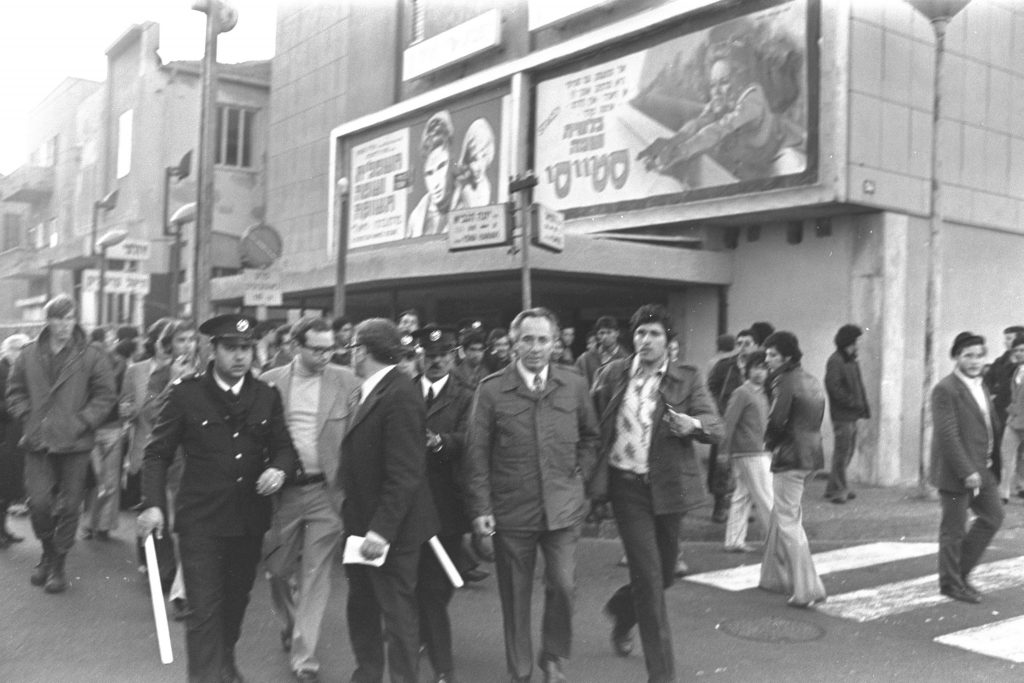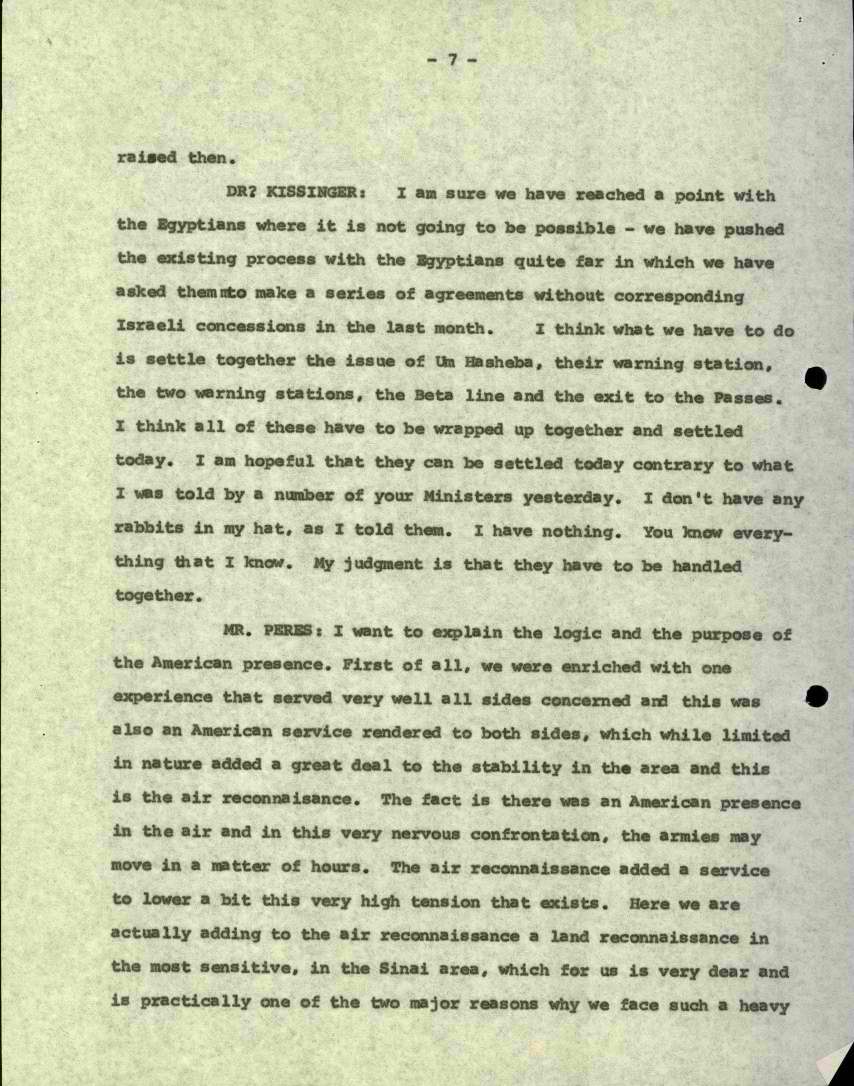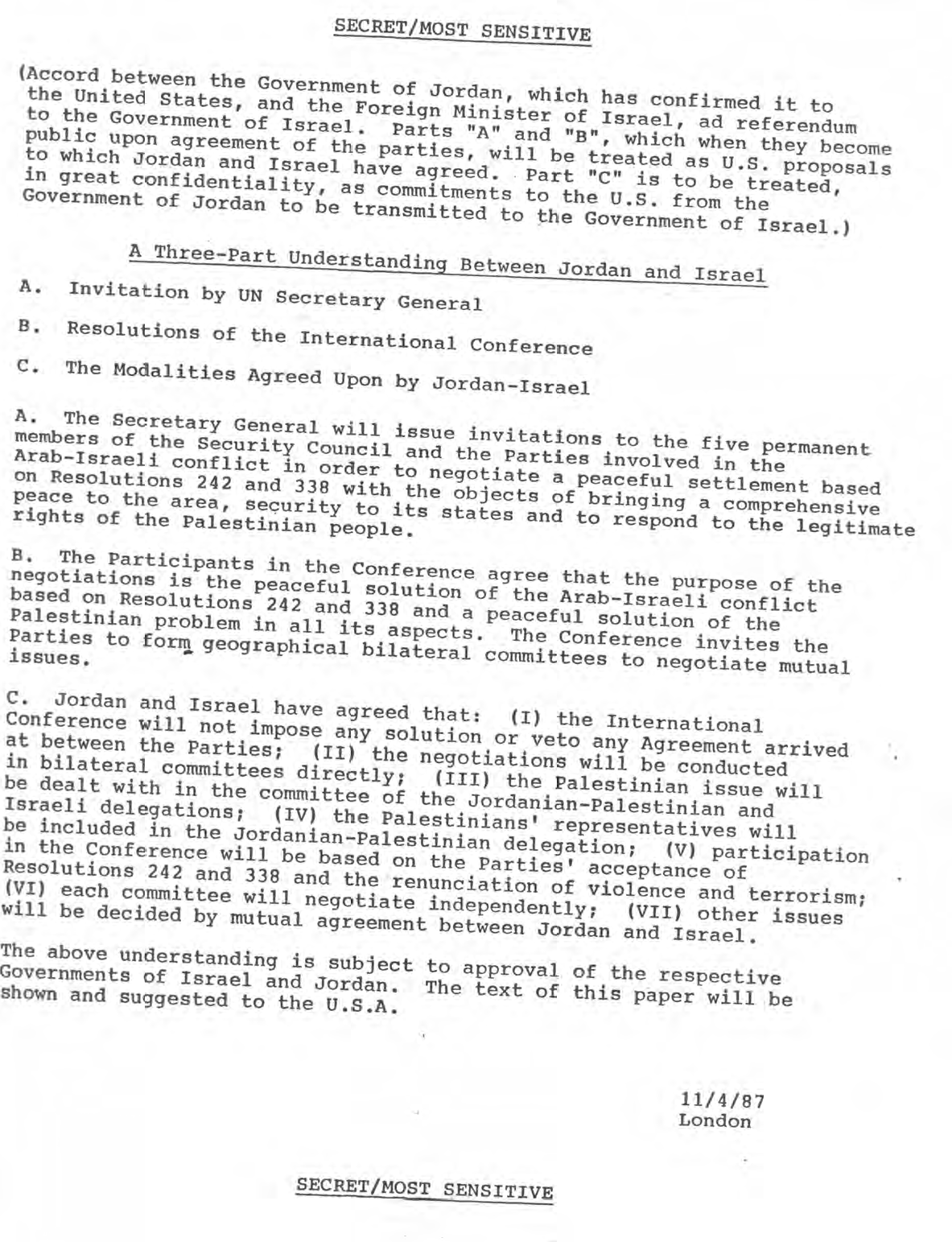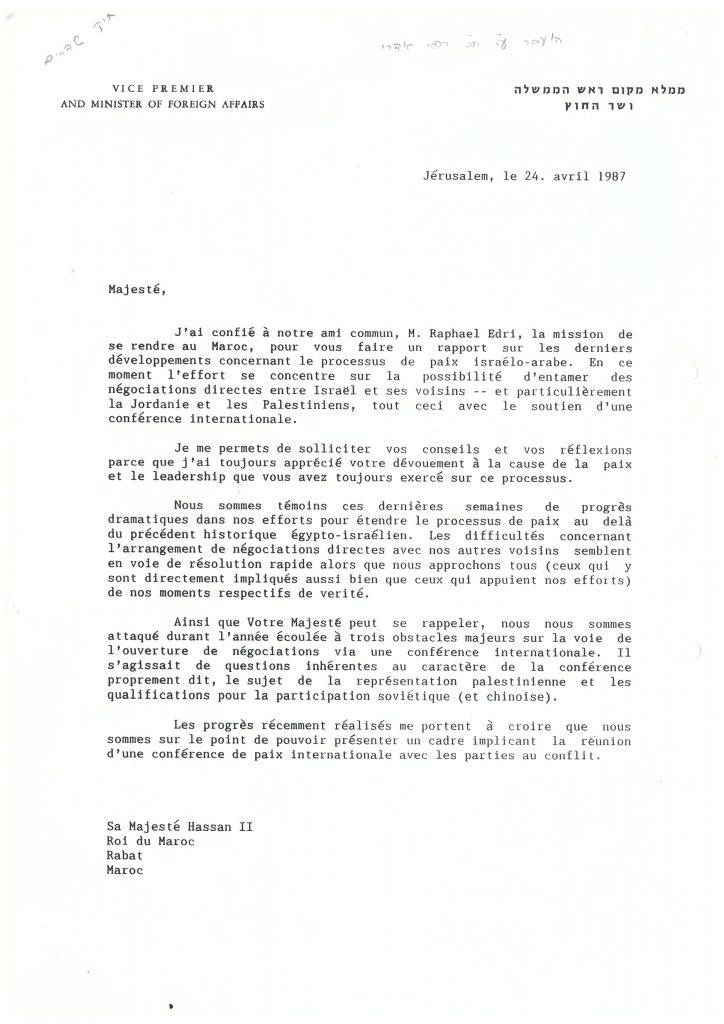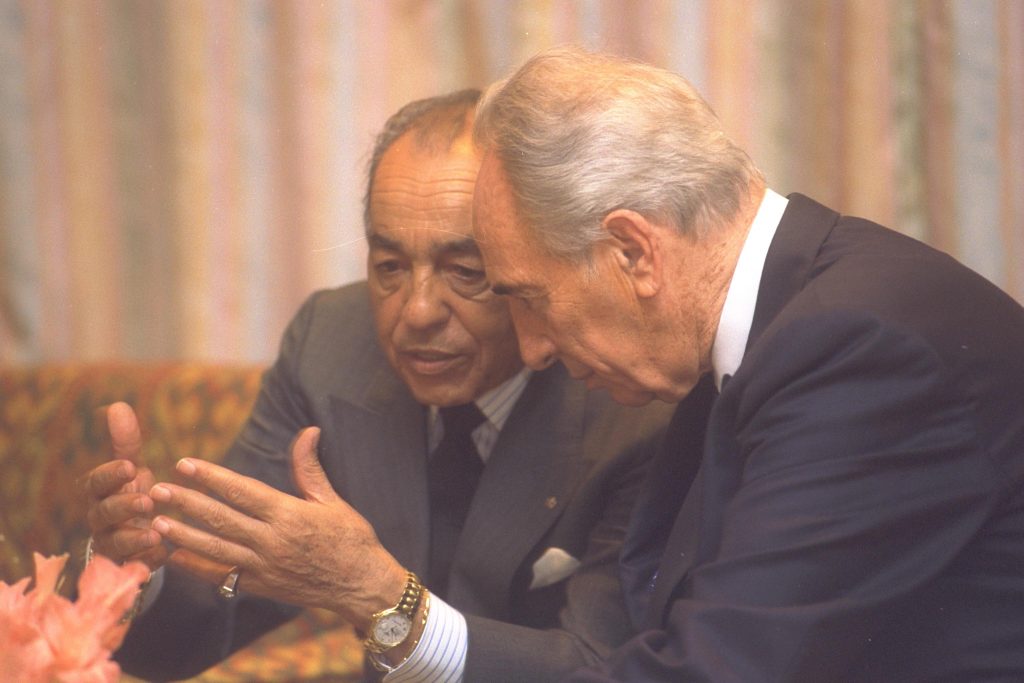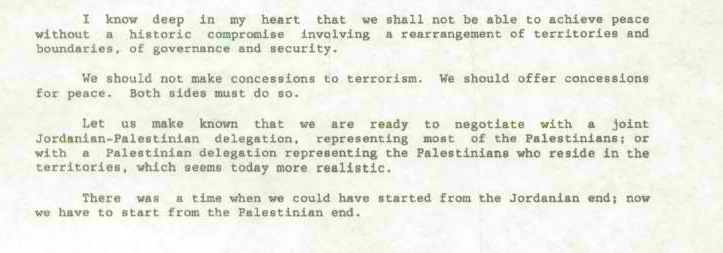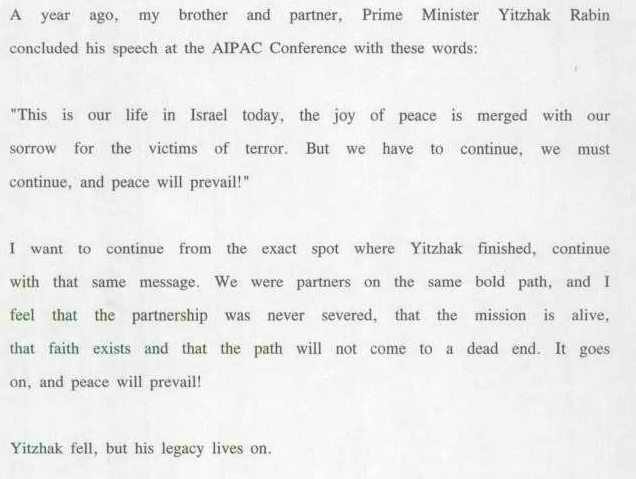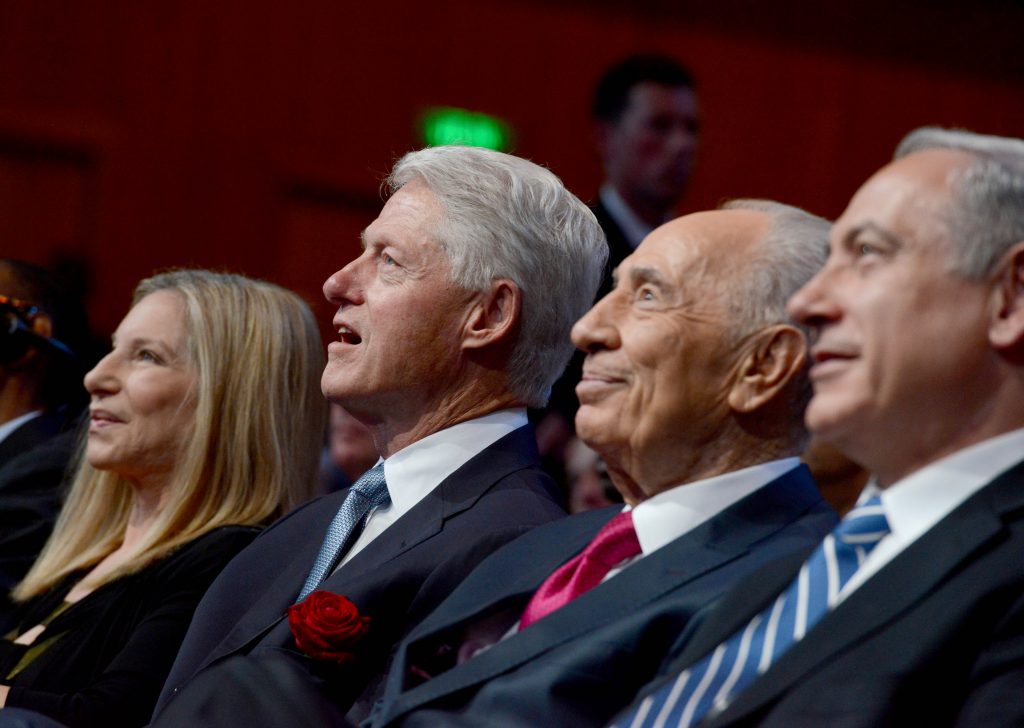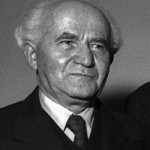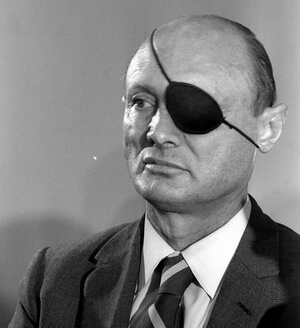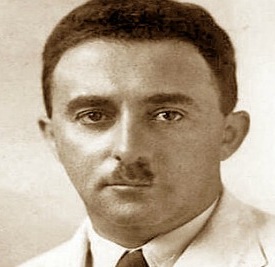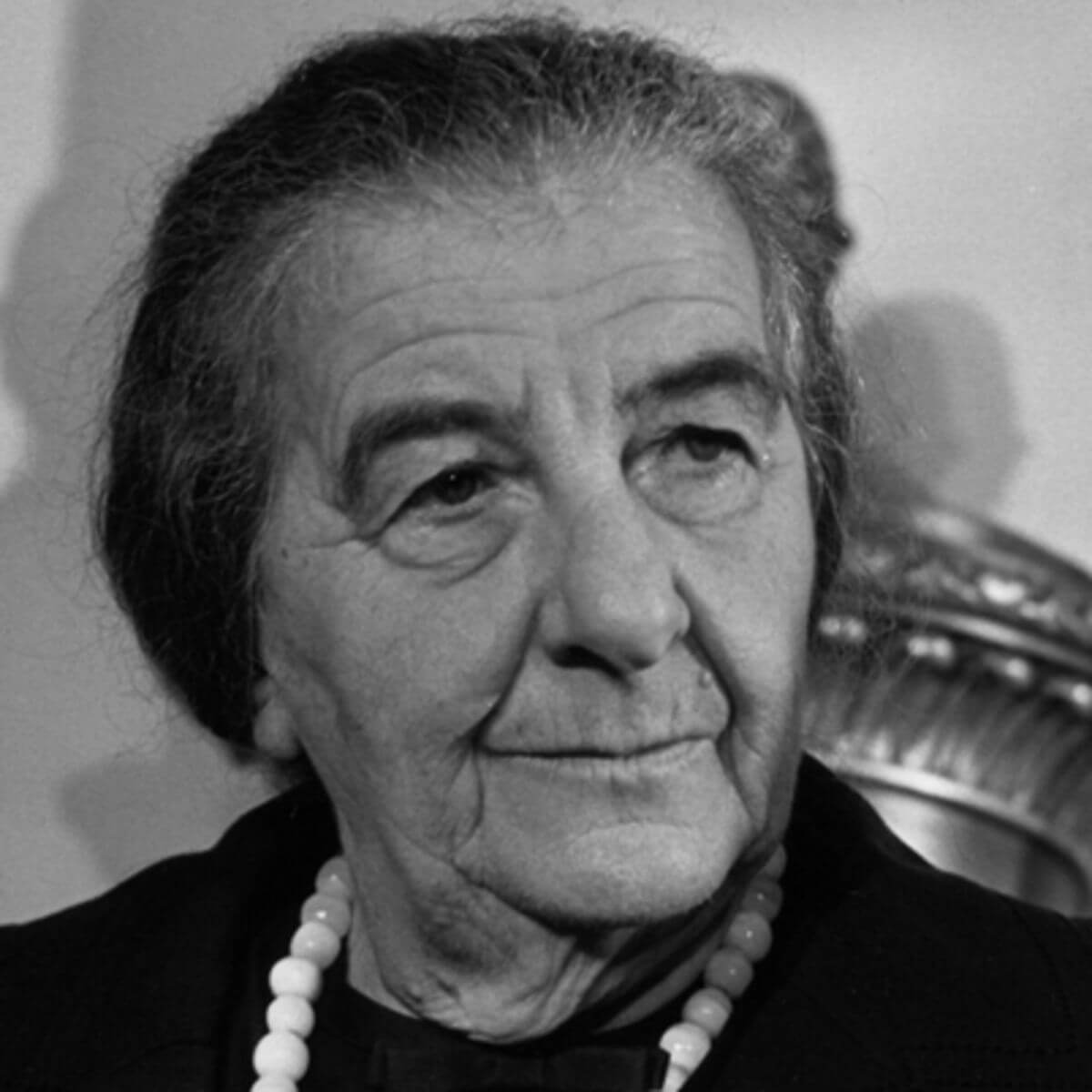א.1 | In the Defence Ministry, 1948-1965
Starting out as a youth leader in the Zionist labour movement, Peres joined Israel’s defence establishment in the late 1940s and became director-general of the Ministry of Defence in 1953 at the age of 29. He was a protégé of the first prime minister, David Ben-Gurion, who advanced him together with Moshe Dayan, in preference to the previous generation of leaders of the ruling party, Mapai. He played an important role in building Israel’s relations with France, and was active in organizing the arms purchases, especially of modern planes, which made possible Israel’s victory in the Six Day War.
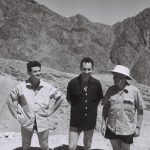
In Eilat with former French Defence Minister, Maurice Bourges-Maunory and Abel Thomas, former head of the French Defence ministry, June 1958. Photograph: Yaron Mirlin, GPO

A formation of Israel Air Force Mirage planes on a training flight, March 1967. Photograph: Moshe Milner, GPO
Following Ben-Gurion’s policy of improving relations with West Germany despite the shadow of the Holocaust, Peres also helped to build the security relationship with Germany, starting with talks held in 1957 with the West German Defence Minister, Franz-Joseph Strauss. As a result Germany supplied Israel with US-made tanks and other equipment.
In 1959 Peres was elected to the Knesset and became deputy minister of defence. One of his main tasks was to improve security ties with the U.S. In May 1962 he visited Washington as a follow up to the visit by Prime Minister and Defence Minister Ben-Gurion, who had met informally with President John Kennedy in 1961. See our Hebrew website for Peres’ report to Ben-Gurion, Foreign Minister Golda Meir and the IDF attache in the US: “In conclusion we can say…that the Americans created the best possible opportunity to listen to our case…there is no substitute for direct dialogue…we must persuade them of the logic of our stand.”

